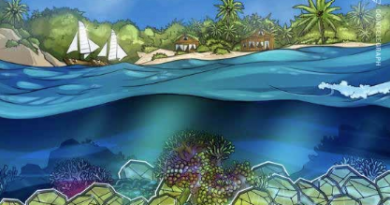New Management Plan for La Digue’s Paradise Flycatcher
A new management plan for La Digue Veuve Special Reserve is being written to promote sustainable tourism, recreation and scientific activities while also protecting the Seychelles paradise flycatcher.
Currently, in its draft stage, the ‘La Digue Veuve Special Reserve Management Plan 2020-2024’ will replace an outdated 25-year-old version and seek to protect the critically endangered bird.The plan makes special mention of the lack of control of access to the reserve, thus causing disturbance to the rare birds.
The Veuve Special Reserve, which is part of a 200-hectare plateau on the western side of La Digue, protects the wildlife habitats and plant species. Managed by the Seychelles National Parks Authority (SNPA), the reserve provides a breeding and feeding habitat for the rare endemic bird species, the Seychelles paradise flycatcher population on the island. The reserve is open to visitors.
“The intent of the plan is to guide the wise management of the La Digue Veuve Special Reserve to ensure it achieves its primary purpose of providing an area of protected and safe high-quality breeding and feeding habitat for the Seychelles paradise flycatcher on La Digue,” said consultant Rachel Bristol.The paradise flycatchers found only in Seychelles, are currently on the International Union for Conservation of Nature’s (IUCN) list of critically endangered species. This species has an extremely small range and probably only one viable population persisting on an island where there has been a continuing decline in habitat.
Bristol who is an independent conservation biologist also told SNA that the plan is being developed with wide stakeholder consultation.Following the public review, feedback will be included in the management plan which is expected to come into effect in January 2021.
The draft of the plan outlines that lack of control over access to the reserve, invasive alien species, lack of interpretation or information provided to visitors, and lack of marketing are some of the main challenges being faced.
The draft reads that “1321 visitors were recorded visiting the reserve from July to December 2019, however, this is likely an underestimation as not all visitors would have entered the reserve via the Visitor Centre as there are numerous unmonitored entrances into the reserve.”
Source: SNA




